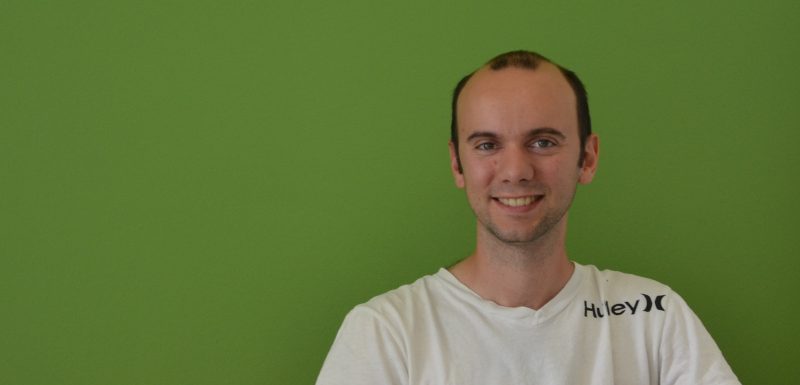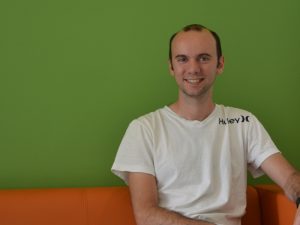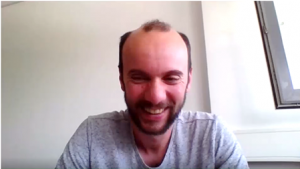
Tristan Petit is a “Freigeist” Fellow of the Volkswagen Foundation and heads a group on nanocarbon materials at HZB. In the interview with Sophie Spangenberger, he talks about the gradual normalization after the lockdown. This post is for now the last one about the corona period at HZB.
How did you experience the confinement and what was the first thing you did when you arrived at the office?
I started the lockdown with a move. So at first I was more stressed by the fear of not being able to move than by the corona virus. We spent the first few weeks confined surrounded by boxes with two kids at home all day and that is when we realized the difference…
When I got back to the office, I enjoyed the silence first! In the office are no children!!! I was also happy to find a big screen to be able to finalise some analyses that were too difficult on a laptop.
What impact have the safety regulations had on your work?
As there can only be two of us on the beamlines at BESSY II, I can no longer go and see the current experiments. However, my current employees are independent and fortunately, they do not need me. We chat by video or sometimes meet on the spot, keeping a distance …
As a group leader, your work consists mainly of coordination but you continue to experiment in the lab. For fun or for obligation?
Both. In recent years, I have indeed spent less and less time on the beamline, but I was happy to go back. It also gives me new ideas on how to improve our characterization methods for the future.
Did the lockdown delay your research projects?
In fact it had a relatively limited impact on my research because I am currently in transition between projects that are ending and new ones that are about to begin. At the moment, my team is reduced to a post-doc and a student writing his thesis, and I am myself on part-time parental leave.
Knowing that I will not have much access to BESSY over the next few months, I have to reorganize my research plans. Luckily, recently we were able to take advantage of the withdrawal of an external group to have a last minute slot on a weekend. This was not planned and it was quite challenging to organize samples because the labs of our usual foreign collaborators were closed. However, it was the opportunity to start a new collaboration with a lab that was less impacted at that time.
Has the crisis had an impact on the funding of your projects?

My team’s contracts will be extended, in particular thanks to the fund provided for this purpose by the HZB. I recently received a 3-year extension of my Freigeist scholarship after an evaluation that took place in March just before the lockdown. The Volkswagen Foundation is flexible and agreed to postpone the start of the new project because access to BESSY will still be very limited at least until the end of the year. Therefore, I will probably open new positions in 2021 instead of this summer while waiting to see how the situation develops in the coming months.
What has the crisis changed for you?
Usually the projects follow one another very quickly and the preparation of the next beam times always have priority. The unforeseen closure of BESSY has allowed us to find time to finalize current articles and to analyse results that were waiting until now.
 I also discovered, like many of my colleagues, that I could do some of my work from home, even if the home office is not always easy with small children. I was probably slower than at the office to write or proofread publications.
I also discovered, like many of my colleagues, that I could do some of my work from home, even if the home office is not always easy with small children. I was probably slower than at the office to write or proofread publications.
Furthermore, the multiplication of online conferences makes it possible to travel less while potentially accessing more presentations than before. However, I really hope that physical meetings will be able to resume because collaborations are more difficult to create in virtual mode.
